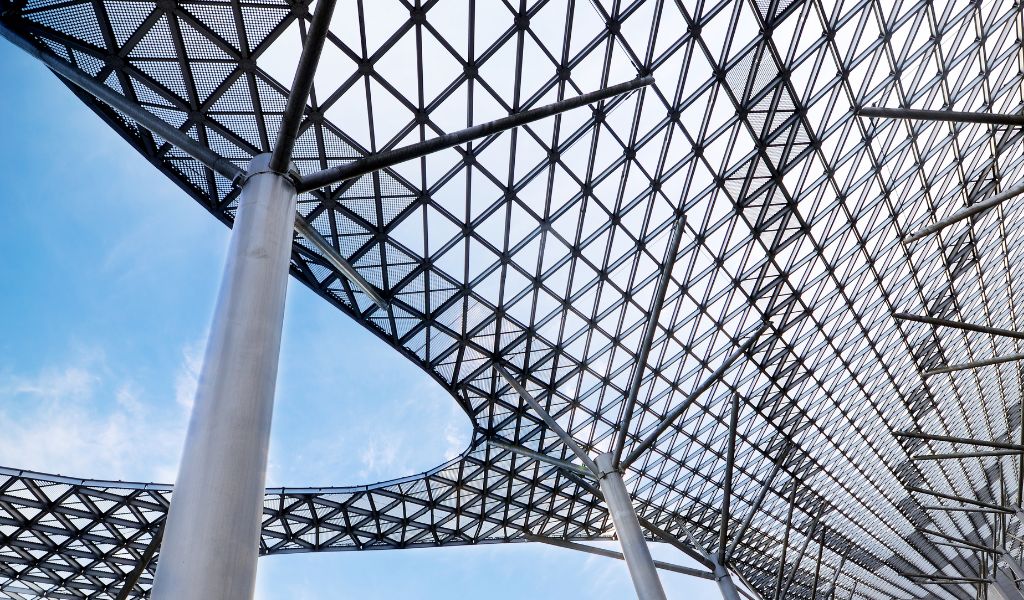How To Extend The Life Of Metal Structures The Smart Way

Table Of Contents
I’ve always thought metal gets too much credit for being “indestructible.” However, rust can ruin it anytime.
The good news? You can make metal last way longer than most people think. Here are the things to know about metal structure maintenance and how to extend its shelf life.
Why Is Metal Structures Maintenance Important?
So here’s the deal: metal’s fighting a quiet battle all the time. Moisture, salt in the air, temperature swings, pollution—it’s all taking tiny bites. Corrosion is the big one. Once rust shows up, it’s already eating away strength underneath that nice shiny surface.
Rust forms when metal reacts with oxygen and water, turning into iron oxide. Sounds fancy, but really, it’s just the metal rotting. Once it starts, it spreads fast, breaks down coatings, exposes fresh metal, and the whole thing snowballs.
That’s why prevention beats repair any day. Once rust takes hold, fixing it costs way more.
Lots of companies now use a blast chamber, basically industrial sandblasters on steroids, to strip away grime, paint, and corrosion before applying new coatings. It gives you a clean, fresh surface that bonds better and lasts way longer. Whether it’s a big piece of machinery or a small bracket, starting with a clean base is half the battle.
Start With Proper Design And Material Selection
Here’s something people forget: the secret to a long-lasting metal structure starts before it’s even built. The design stage decides everything.
If you’re building near the coast or in a humid spot, don’t cheap out on materials. Stainless steel or galvanised steel handles corrosion better. Aluminium’s another winner for salty environments—it naturally forms its own protective layer.
Design’s just as important. Water loves to find tiny corners and sit there. That’s bad news. Engineers often add drainage holes, smooth joints, and gentle slopes so water can’t pool up. Trapped moisture and poor ventilation both contribute to rust formation. Less trapped moisture means less rust.
And if you can avoid unnecessary welds or weird crevices, do it. Those spots are like rust magnets. A bit of smart thinking early on saves years of maintenance later.
Regular Inspection Is Non-Negotiable
Even if you built it perfectly, you still need to check on it. Regular inspections are like routine checkups — skip them and you’re asking for trouble.
That small rust patch you noticed last month? If you ignore it, it’ll spread faster than you expect. Set a simple inspection plan and stick to it:
- Look closely: Peeling paint, blistering, weird discoloration—those are your warning signs.
- Tap test: Lightly hit surfaces with a hammer. If it sounds hollow, you might have hidden corrosion.
- Environment check: Make sure water drains right, airflow’s good, and nothing’s exposed to harsh chemicals or salt.
For big stuff—bridges, towers, tanks—bring in pros. They’ve got fancy tools like ultrasonic scanners or thermal cameras that spot damage you can’t see.
Bottom line: catching problems early always costs less than rebuilding later.
Keep Surfaces Clean
Okay, this one’s super basic, but people still skip it: keep it clean. Dirt and salt trap moisture, and moisture is literally rust’s favorite thing.
Don’t go overboard with harsh cleaners or metal scrapers, though. They’ll damage your coating. Use mild soap or a proper metal-safe cleaner instead.
It’s not exciting, but this one habit probably adds more life to your structure than anything else.
Invest In Protective Coatings
If metal had armor, coatings would be it. Paints, sealants, galvanising — they all do one job: keep the bad stuff (air, moisture, sunlight) away from the metal.
Some quick types:
- Paint coatings: Heavy-duty epoxy or polyurethane paint can take a beating. They block UV rays, moisture, and hold up for years.
- Galvanising: Basically dunking steel in molten zinc. The zinc corrodes first, protecting the steel underneath. Perfect for outdoor or marine setups.
- Powder coating: This one’s baked on — literally. It gives a smooth, durable finish that looks clean and lasts.
Just remember, the best paint in the world won’t stick if the surface is dirty or oily. Always make sure surfaces are properly prepared before applying coatings.
Don’t Ignore Small Repairs
Small problems don’t stay small. Ever. That little rust spot on the beam? Give it a year and it’ll spread like wildfire.
When you see a problem, fix it right away. Scrape or sand off the rust, treat it with a converter, repaint. Replace any cracked gaskets or loose bolts before they cause more damage. And for areas that get constant friction, add rubber padding or plates to protect against wear.
A half-hour repair now can save you thousands later. Seriously.
Use Cathodic Protection For High-Risk Areas
Now, if your structure’s sitting in a brutal environment — like underground, underwater, or near saltwater — even coatings might not cut it, that’s where cathodic protection comes in.
Sounds technical, but it’s actually pretty clever. Basically, you make your structure act like the cathode in an electric circuit, which stops it from corroding.
Two main types:
- Sacrificial anode: You attach a more reactive metal, like zinc or magnesium, and it corrodes instead.
- Impressed current: Uses an external power source to send a small current through the metal to prevent rust.
They’re not DIY-friendly, but for pipelines, ships, or coastal gear, they’re worth every penny. They can add decades to the lifespan of expensive stuff.
Control The Environment When Possible
- Ventilation: Keeps air moving so moisture doesn’t hang around.
- Dehumidifiers: Especially good for storage or factories in humid areas.
- Drainage: Make sure water flows away instead of pooling.
- Covers and shelters: Even basic ones cut down exposure to rain and sun.
Simple stuff, but it really slows down corrosion. I’ve seen old metal sheds last twenty years longer just because someone added a vent and fixed the drainage.
The Importance Of Documentation And Planning
If you run a big facility, get a maintenance system that logs everything. It keeps schedules straight and helps with budgeting, too. You’ll spot patterns like certain areas that always rust faster and can plan smarter next time.
When To Bring In The Professionals
When it comes to big structural work or complex coatings, get help.
Pros have the right tools, training, and materials to handle stuff safely and properly. They can also tell you which protection method suits your environment best — maybe it’s galvanising, maybe cathodic protection, maybe both.

























